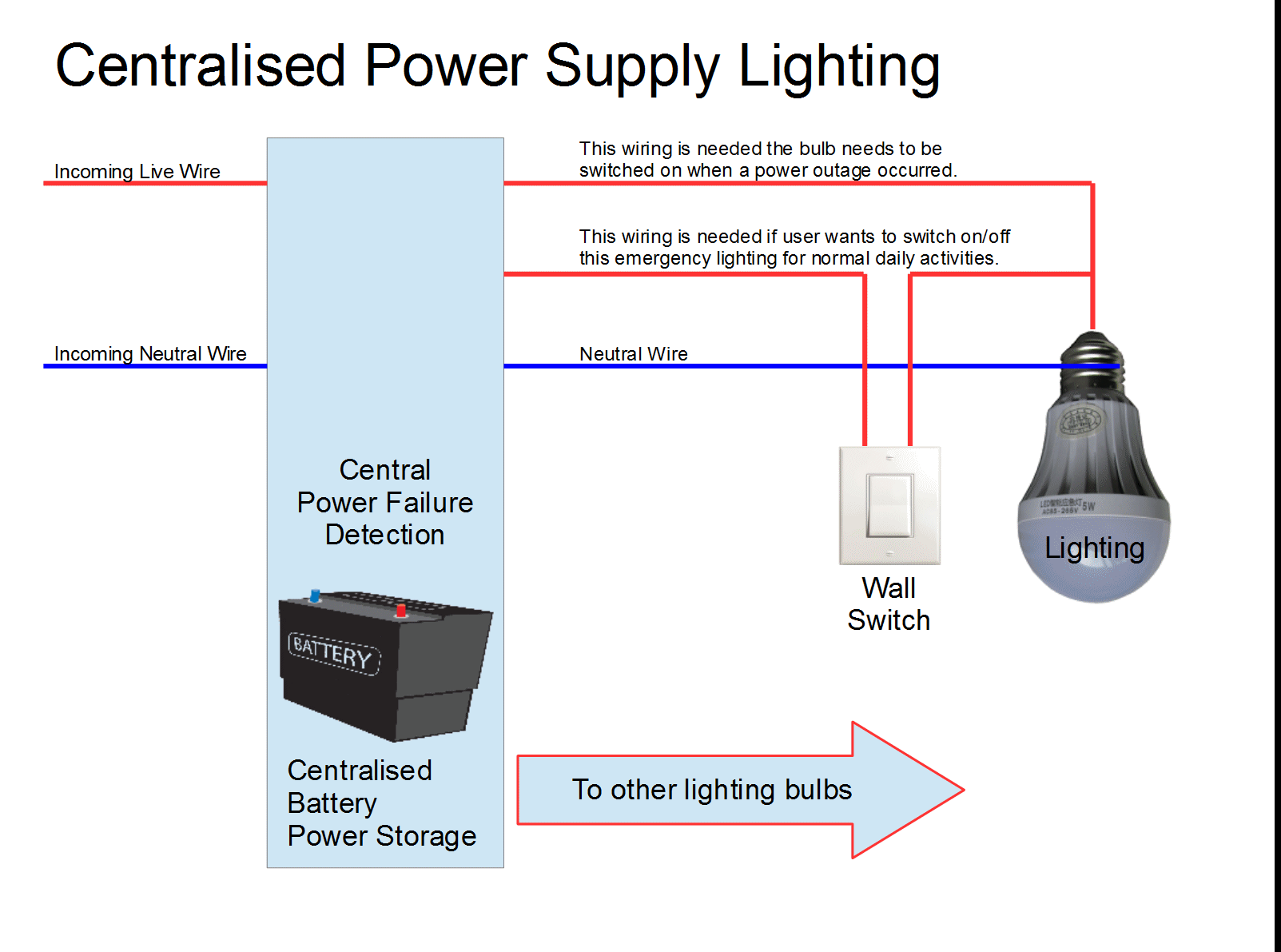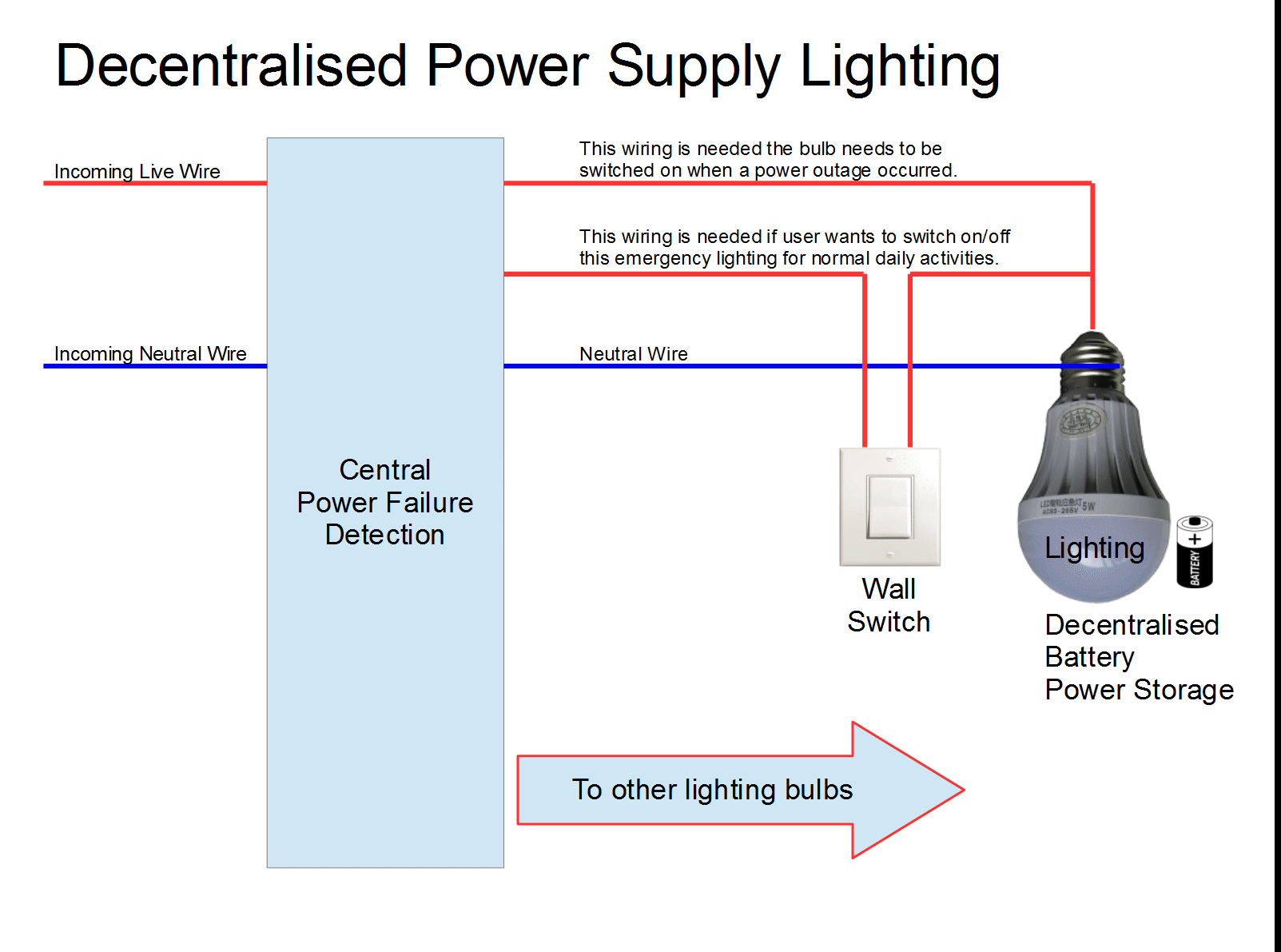An emergency power supply is often installed for critical building infrastructure to ensure that power supply is not interrupted.
Emergency infrastructure can be emergency lighting, critical control system, public announcement system, communication equipment, etc…
Traditional Emergency Power Supply (Central Supplied Lighting Systems)
The traditional emergency power supply has a central power supply system. When there is a power outage, the system will detect and activate the backup power. The backup power can supply to allow the continuous operation of critical building equipment.
Usually a central power supply system consists of a UPS (uninterrupted power supply) located in a central location. Energy is stored in batteries and will be release when there is a power outage.

New Emergency Power Supply (Decentralised Supplied Lighting Systems)
A decentralised supplied lighting system do not have battery stored in a central location. The battery stays with the lighting.

Advantages of Decentralised Supplied Lighting Systems
What are the advantages of a decentralised power supply system for emergency lighting?
Less chance of a complete failure.
The decentralised lighting system has the battery located near the lights. A power or light failure will not affect the rest of the system.
A failure in central system could mean a complete power failure.
Scalable.
The traditional central power supply system requires a central location for the system to provide the backup power source.
Proper planning is required during the initial installation phase. The number of lights and equipment determines the capacity of the central backup system. To support more lighting and equipment, a bigger capacity UPS is required. This also means adding more new lighting points requires changes to the centrally supplied system as well.
A decentralised supplied lighting system has already factor in its own battery capacity to allow its own operation during an emergency. The decentralised central control can remain fairly simple and unchanged while allowing more of the decentralised lighting unit to be installed. There is no need to re-plan the entire power supply system as the lighting bulb unit has already cater enough power supply for its emergency use.
Lower cost of implementation.
Traditional central power supply requires a large quantity of batteries and UPS equipment in a central location. It has to distribute the power across the building to all the lighting.
By designing the batteries into the product, the cost can more efficient and managed. The installation and equipment are simple on the central room.
Lower maintenance cost.
A traditional central power supply system is big and expensive. Batteries have a life span and will not last forever. Replacement and maintenance of the system are often a bigger job and bigger cost.
A decentralised design has a much simpler central control, has easier to maintain and lower cost. Battery energy storage is located with the lighting. Replacement of the power storage goes together with the lighting. Easier and lower cost to maintain.
Testing of each lighting unit is simpler as well.
Compatible installation to existing lighting wiring.
The installation is compatible with existing wiring.
Higher chances of functioning light in the event of fire or building collapse.
A centralised power supply system may fail in the major event like fire or building collapse.
The decentralised control system works base on short circuiting. Fire or building collapse which shorts the electrical wiring does not prevent the lighting from failing.
Alternative Solution to Centralised Emergency Power Supply
Contact us today for more information.
or click here to check out other emergency lighting products for building and offices.
